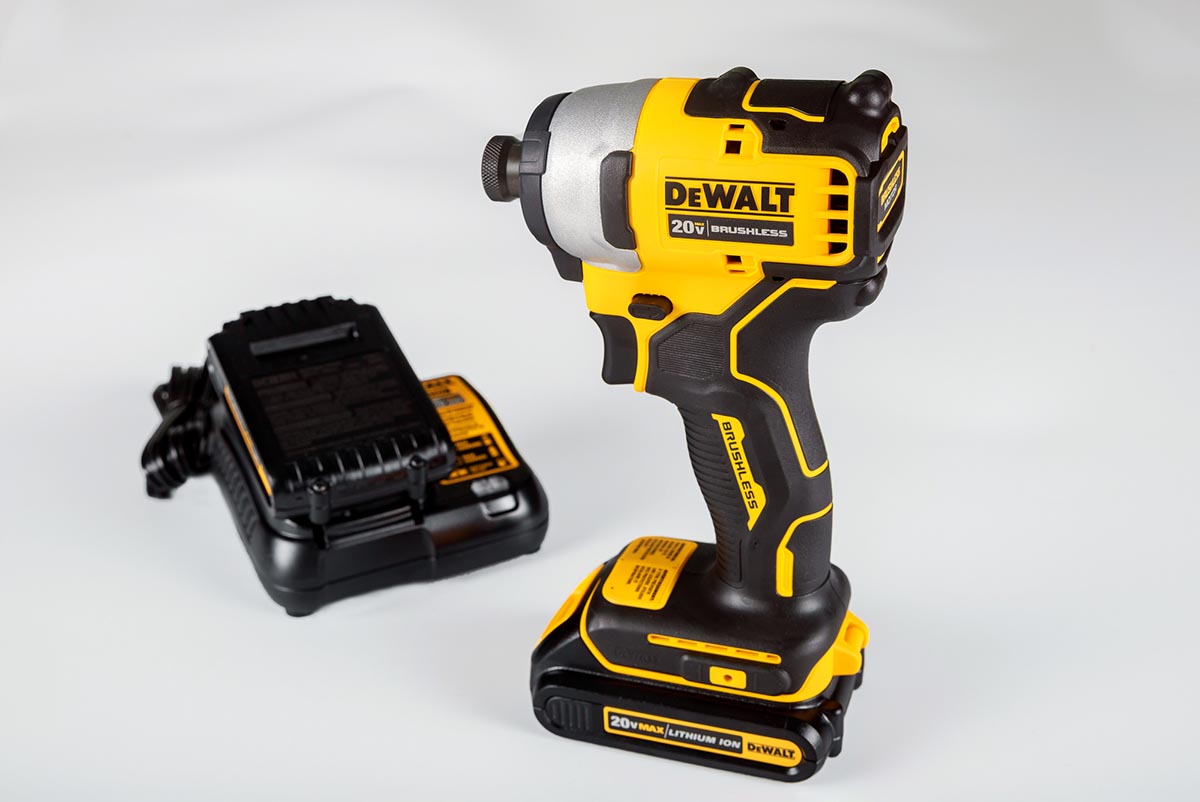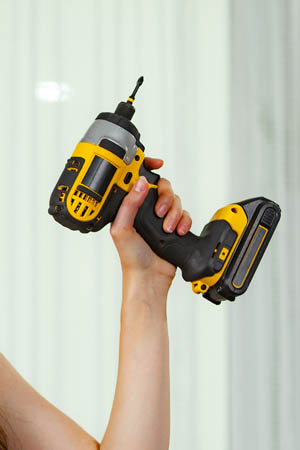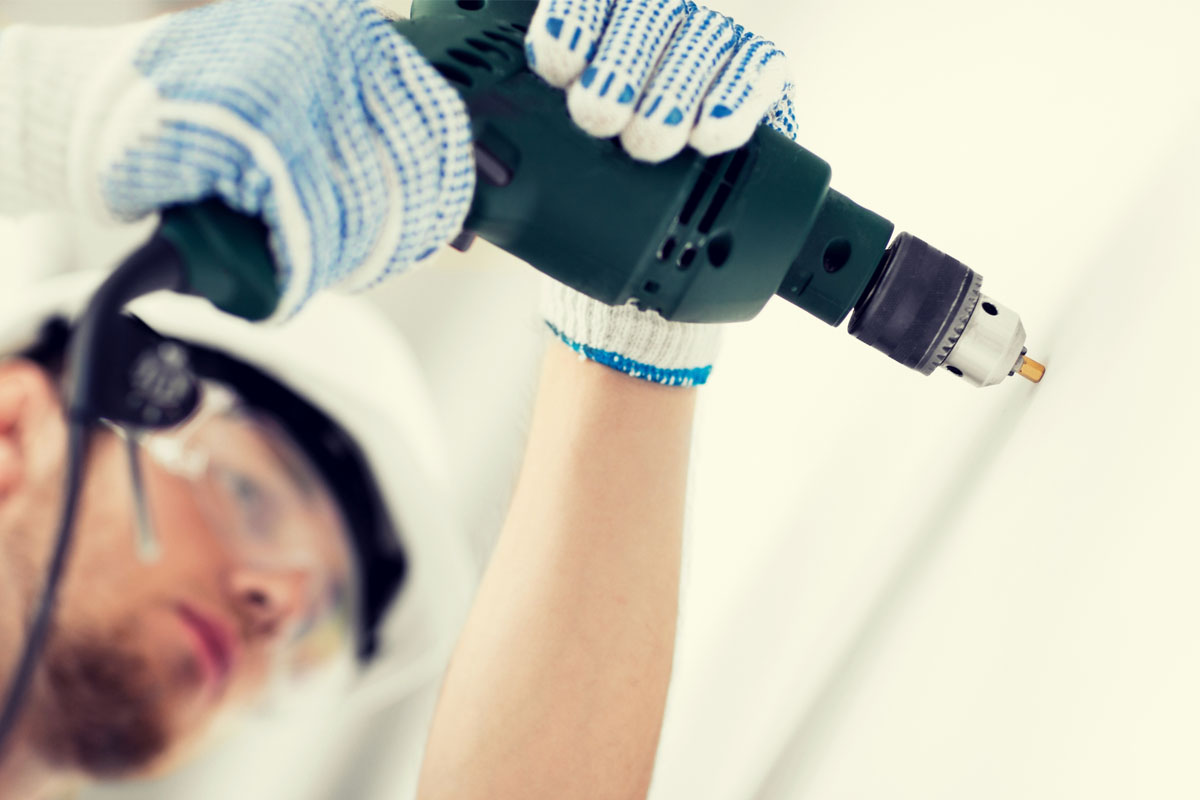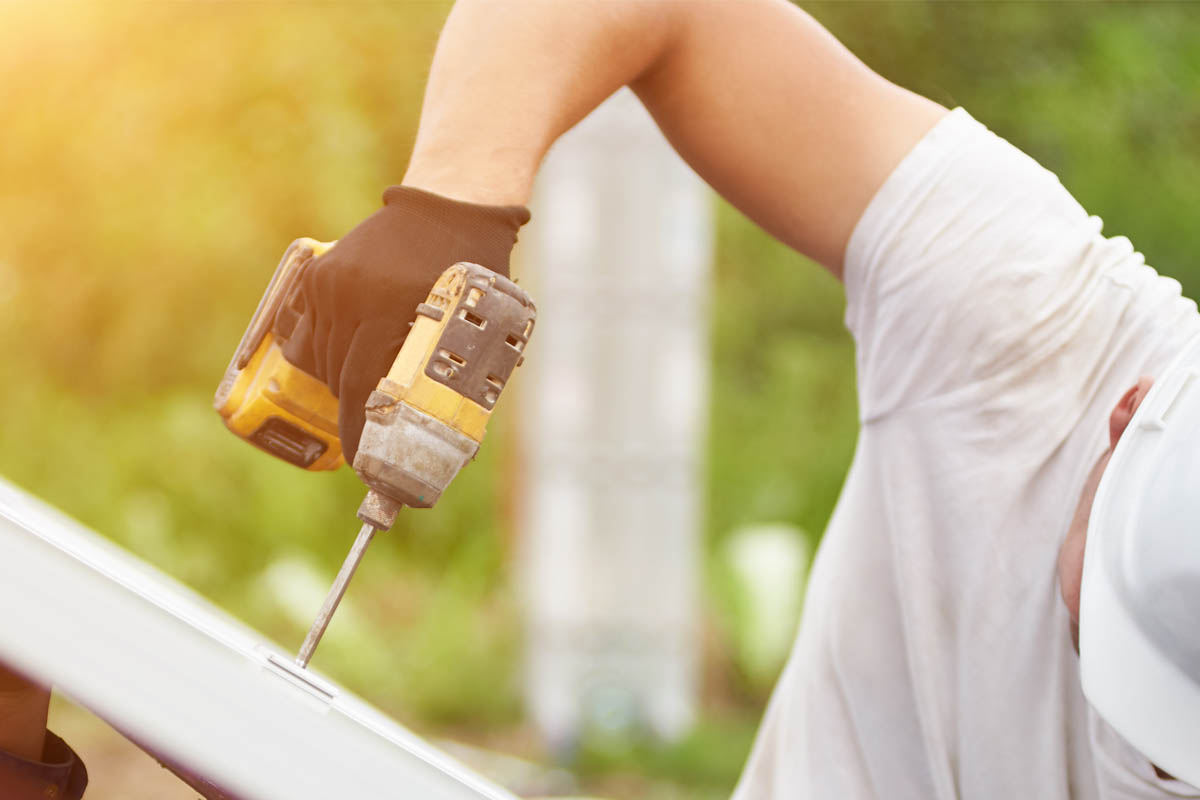

We may earn revenue from the products available on this page and participate in affiliate programs. Learn More ›
Q: When shopping for the right tool for the job, I see so many choices. Cordless drill, hammer drill, and impact driver: What is an impact driver?
A: When it comes to driving fasteners like screws and bolts into different materials, the savvy DIYer will have various tools. If you think you may need something more in the toolbox than a standard screwdriver, you’ll probably see similar looking items with very different names, such as a cordless drill, hammer drill, or impact driver. Knowing what makes them different from each other will help you in your selection.
A cordless drill rotates a fastener into place, and the hammer drill adds a pounding force to the job. But, what is an impact driver? A quality impact driver combines the drill’s rotational force with bursts of impact similar to the hammer drill to drive the fastener past points of resistance. It’s truly the best of both worlds.
There are a few differences between impact drivers and hammer drills.

The main difference between a hammer drill and an impact driver is the type of force used. Hammer drills use a hammering action to exert extra force when needed, as though a hammer was hitting the back of the drill. This action provides the necessary penetration required to drive the fastener through a hard material as the drill spins debris out of the hole. You can use hammer drills to drive bolts into concrete, brick, masonry, or heavy metal.
Like the cordless drill, an impact driver uses rotational force to drive a screw and saves its bursts of quick power when it feels resistance. You would use an impact driver for long screws or large fasteners when working with wood. An impact driver is also lighter than the hammer drill, making it easier to handle.
An impact driver offers the most help when using a lot of large bolts and screws.
Impact drivers handle large screws and bolts more efficiently than the average compact drill. Because they automatically add extra rotational force when they encounter resistance—two to three times more torque than a drill—you’ll find using an impact driver is easier on your hand and wrist. So, if your project involves a lot of large fasteners, like a deck or pergola, you’ll find an impact driver makes the job a lot easier.
Is there anything an impact driver cannot do?
Unlike the compact drill, an impact driver is all or nothing without variable speeds or settings. So, it’s not the tool to use if you need precision. Limit the use of an impact driver to projects where the hole’s size or placement is less critical than the amount of torque to do the job. Furthermore, impact drivers are not suitable for drilling into hard materials like brick or concrete. For that, choose a hammer drill.

As the name suggests, these tools are built for driving but can be used to drill in a pinch.
Impact drivers are for driving fasteners, not drilling holes. However, in a pinch, if you have the proper bit, you can drill a hole in light-gauge steel or softwood with a standard hex-shank drill bit. But if you want a hole greater than ¼” in a more substantial or denser material, you’ll need a bit designed for an impact driver. Otherwise, the added torque of the driver will snap the bit.
DIY-savvy homeowners should start with a drill and then add an impact driver when the right project arises.
That depends on the type of DIY projects you’ll be doing. But for basic home repairs, a moderately priced drill should be adequate. Drills are versatile. Some have more settings for both speed and torque, and some even have an impact setting. They also can tackle many kinds of small projects because they can use a wide variety of bit types.
Experts agree that when building your tool collection, begin with a drill. But for the passionate DIYer, adding an impact driver will afford you the tools needed for almost any project.
An impact driver is more suited to larger projects.
Driving the bolts used in securing the beams of a pergola is one example where an impact driver comes in handy. It’s the tool to use for any project requiring long screws or bolts. Also, when working with pressure-treated lumber, hardwood, or heavy steel, the driver has the torque needed to get through the material with ease.

The best impact driver depends to buy depends on your project.
To select the best impact driver to add to your toolbox, ask yourself what types of projects you’ll be tackling. The answer is in the power needed for the job. The more twisting force, or torque, the driver has, the better it will accommodate the larger jobs. Measured in inch-pounds, a 2000 inch-pounds rated impact driver has more power behind it than an 800 inch-pound rated driver.
Impact drivers run on cordless battery packs. The higher the voltage, the longer the battery life and the more power your driver will have. Finally, consider the weight of the driver. If you plan to use it to install fasteners overhead, you’ll want something that won’t fatigue your arm or wrist.
